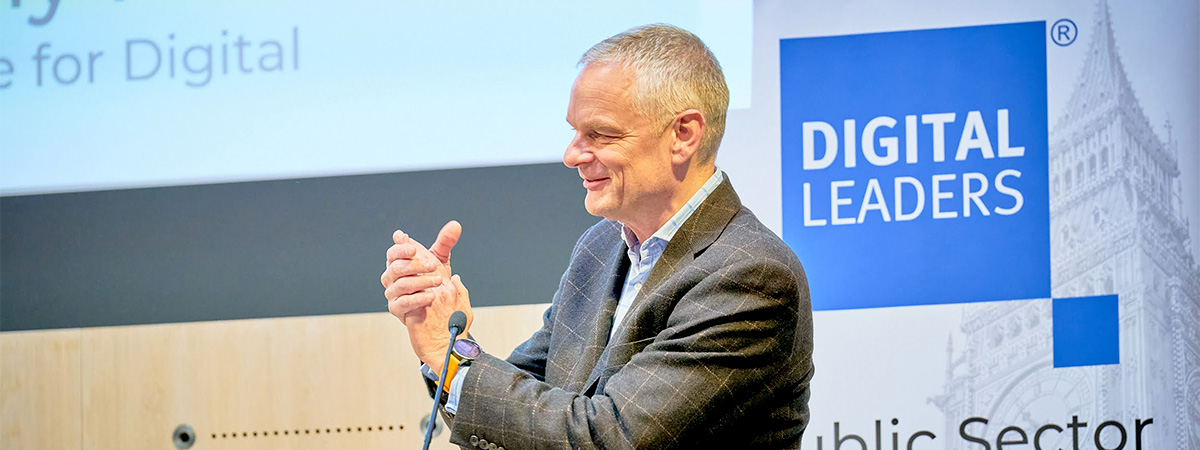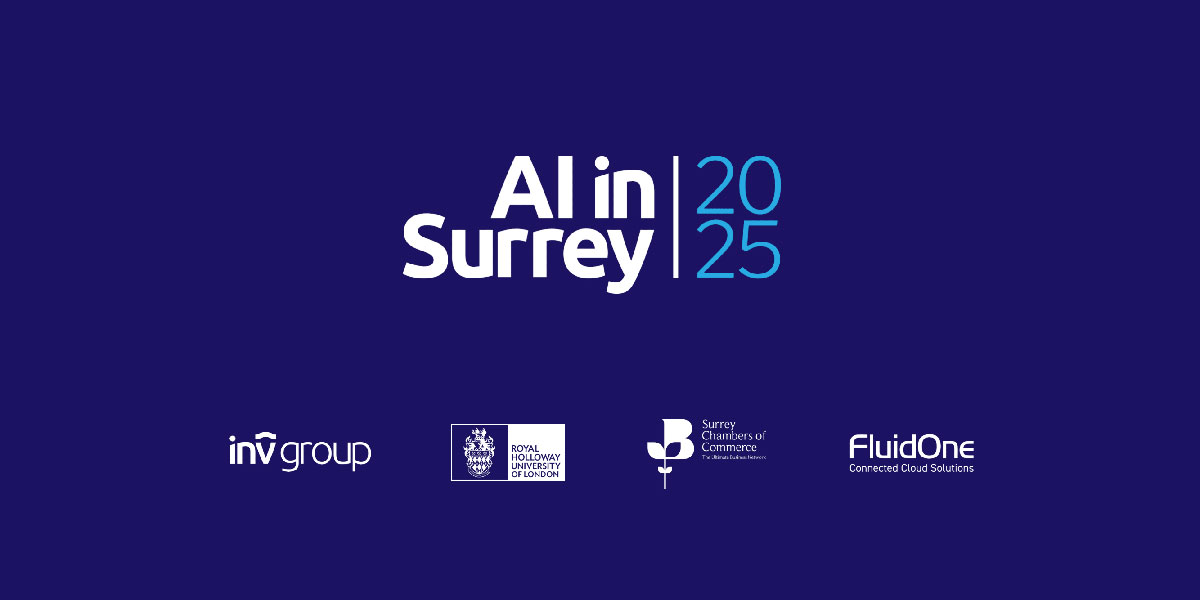Written by Professor Mark Thompson, Exeter Business School and DIGIT Lab
Digital Leaders’ 5th Public Sector Innovation Conference focused on how our public services can innovate using the next generation of emerging technologies, for example AI/ML, process automation, digital twin, blockchain/distributed ledger, IoT/edge computing, geolocation services, AR/VR, advanced analytics, etc. As DL Chair Sabby Gill pointed out in his opening welcome, the speed at which this ‘next generation’ wave of technology is developing now demands our ‘focal attention’. So that’s what we gave it. I thought that this year’s conference was one of the most thoughtful we’ve ever had, and so I’ve divided my summary into some key themes, rather than a chronology of what was said.
First, ‘stuff government is doing’. Paul Scully MP, Minister of State for Digital, opened by detailing some of the current government initiatives aimed at supporting digital innovation: these include the creation of a Department for Science, Innovation and Technology; a government science and technology framework; a Government Office for Technology Transfer; and £20bn in R&D investment. There are certainly some heartening things going on: later in the day, Megan Lee Devlin, COO at CDDO, outlined some sensible activities Cabinet Office is undertaking the reinvigorate government’s ‘transformation’ programme, including the roadmap, and a skills programme; on the same panel, Dr Shruti Kohli, Head of Data Science (Innovation) at DWP, offered a fascinating insight into how an innovation group in a major government department is actually run on the ground.
And – that ‘on the ground’ thing: throughout the day, we heard fascinating examples of actual use of every single one of the above-emerging technologies ‘on the ground’ to innovate – from use of AR/VR to engage more citizens in their local planning processes, to advanced analytics to triage hospital A&E data to identify potential instances of domestic violence. There’s no doubt at all that lots of innovation using emerging tech is actually happening ‘out there’.
But – and this is significant – we have some major ethical questions to think through. Particularly fascinating on ethics was Neil Lawrence, Professor of Machine Learning at the University of Cambridge, who drew a sharp distinction between, for example, the ability of large language AI like ChatGPT to interpolate based on existing data/human behaviour, rather than to extrapolate (predict with validity). This is because such AI “cannot predict where we have never been”. Neil went on to develop ‘the great AI fallacy’, namely a tendency to expect the same things from AI as from humans. Human-machine behaviour is much less predictable than machine behaviour, and the trust (also mentioned by Ctrl-Shift’s Liz Brandt and others) needed for the digital economy to work relies on continuing involvement, and accountability, from humans; therefore, any vision of come centralised AI, and supporting processes, would never be trusted by people because it would have no obligation – (paraphrasing Onora O’Neill) since trust and obligation form two sides of the same coin. In this sense, it seems to me that AI cannot, by definition, be ethical in and of itself: we need to include humans at every stage in the process. Perhaps such thinking might help to address Elizabeth Vega’s question to delegates about ‘what it will take for people to trust and use innovative new services’?
Continuing in the ethical vein, Alex Davies Jones MP, Shadow Minister for Technology and the Digital Economy, underlined the need to avoid consolidation of market power around ‘big tech’, and to address the significant current disparity in access to digital infrastructure around the UK. Such concerns were strongly articulated in our final panel on inclusivity, chaired by Leigh Smyth, Chair of the DPA Community Board, which named digital inclusion as a human right; called for increased investment in ‘welfare tech’; and in which Leigh cited the startling, and disturbing, statistic that of the 1 in 5 adults with a disability, ¼ have never used the internet at all.
Linked to this ethical theme was the usual theme about skills and culture. However, rather than just bemoaning the lack of digital skills available to government (this is significant: I note that the recent NAO report cites a has been a 20% reduction in digital, data and technology apprenticeships from 800 in October 2021, down to 637 in December 2022; and a 7% increase in government digital, data and technology vacancies – from 3,900 in April 2022, to 4,100 in October 2022), there was a fascinating discussion about government’s mandate to innovate in the first place. Jon McGinty, MD Gloucester City Council and Chair of Local Government Digital, stated that his residents simply would not grant his council the mandate to experiment with scarce public money ahead of much-needed services – and this concern about where it’s ‘OK to innovate’ and where not, resonated through many of the subsequent discussions; it became clear that there is more funding, and space, for innovation in central government, for example.
Relatedly on local services, our afternoon keynote, Theo Blackwell, CDO for London, underscored the need to ‘fix the plumbing’ before getting too ‘boosterish’ about the possibilities of emerging tech. He’s in good company: I note that the majority of the emerging technologies listed on Gartner’s Impact Radar 2023 are about building the advanced infrastructure that will be needed to run advanced user layers such as AR/VR, for example. Accordingly, he detailed a number of initiatives London is undertaking to ‘address the copper legacy’. However, Theo also pointed to the effort that goes into just getting councils to collaborate in driving through some of these cross-London infrastructural projects that must surely benefit all of their residents.
And this brings me to the last theme of the day: that the basic twentieth-century, siloed operating model of government is essentially broken. As well as in Theo’s comment, this was very apparent in AWS’ Mike Beaven’s panel, bringing together digital and adult social care specialists from Redbridge and Hackney Councils, where Hackney’s Emma McGowan identified a lack of collaboration as the ‘biggest barrier to success’. It was felt that boroughs should not be duplicating their digital design teams since in general, ‘one size usually fits all’ in local government – but that unfortunately there was little provision for sharing innovation across local public services (although in another panel Katy Armstrong Deputy Director for Digital Service at DLUC had detailed a few helpful initiatives, it was clear that given the national scale of the problem, these were small and underfunded). Finally, it was in Leigh’s panel on inclusivity that it became clear that myriad, largely uncoordinated innovations at local level will never be enough without wholesale change to the collective operating model of local services. We Are Digital’s Matt Adam spoke with passion about the huge social impact of the government’s inability to overcome the fissiparous and outdated barriers of organisational demarcation that plague those trying to make a real difference in today’s local services.
And there we ended our innovation conference: an unusually full day of high-quality reflections, and discussions, about initiatives, ethics, culture, infrastructure, and collaboration (or barriers preventing collaboration). I was left convinced that society will have a pressing need for many more fora as good as Digital Leader’s in the future, to address these critical problems. If our public institutions, and civil society itself, is to survive the unprecedented and current demographic, fiscal, and environmental pressures that our public servants must tackle each and every day.
Originally posted on Digital Leader’s website






